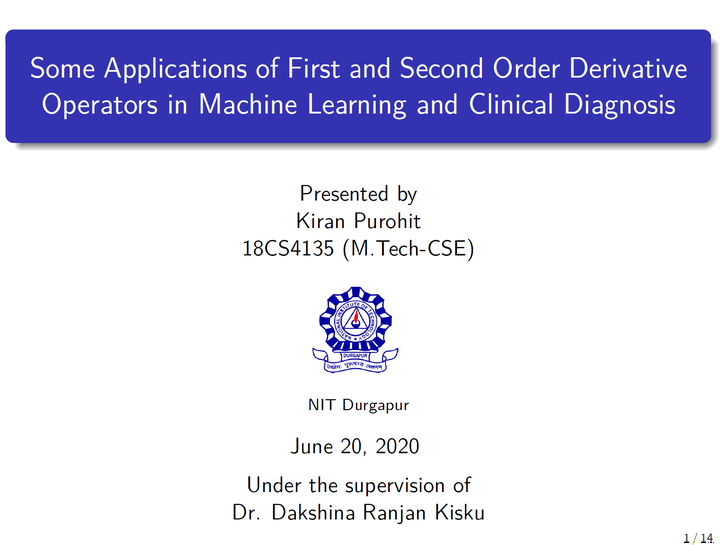Some Applications of First and Second Order Derivative Operators in Machine Learning and Clinical Diagnosis @M.Tech Thesis, NIT Durgapur

Abstract
Unlike image restoration, image enhancement techniques are found to be subjective in nature as the appropriateness of the appearance of output image depends upon human perception. Hence, it is very difficult to determine the appropriateness of the image enhancement techniques including edge detection prior to an application. This thesis makes use of regression models to determine the suitability of edge detection operators. With the existing operators, a novel Hybrid operator is used in the evaluation. The novel detector is made of combining Canny and Sobel operators with the gradient of the texton image. With this approach, an estimation model as an objective function is determined and further, it is used to determine the degree of proximity (suitability) of the edge operators on two publicly available databases, viz. the BSDS300 and the Multi-cue. The experimental results exhibit that the proposed edge detector outperforms other operators. Sharpening Filters can also be used for data augmentation in detecting Coronavirus using deep learning CNN model. Coronavirus is rapidly increasing and threatening the health of millions of humans. Clinical study shows that it affects the lungs. So, lung infections can be diagnosed with the help of X-Ray and CT Scan images. As deep learning is the most effective and reliable AI technique to classify the COVID-19 screening, we proposed a model which uses Convolutional Neural Network (CNN) fused with the image processing based data augmentation. This application makes use of multiple representations of the same X-Ray and CT scan images, produced through sharpening filters viz. Sobel, Prewitt, Roberts, Scharr, Laplacian, Canny, and Hybrid, are mixed up with visible X-Ray and CT scan images for training the convolutional neural network (CNN) based deep learning model. Our proposed AI application has been tested on publicly available databases of both chest X-Ray and CT Scan images.